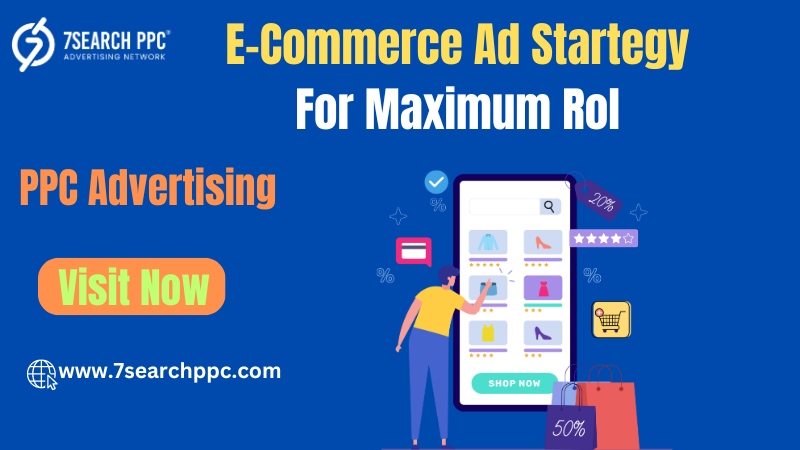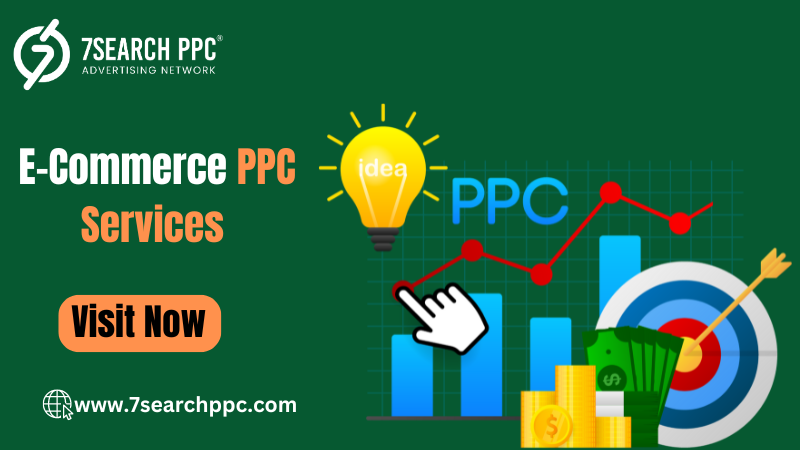In today's highly competitive digital marketplace, creating effective e-commerce ads is essential to driving traffic and increasing conversions. Businesses are constantly seeking innovative ways to stand out from the crowd and target the right audience. E-commerce ads encompass a variety of formats, including PPC for e-commerce sites, E-commerce PPC services, and E-commerce ad networks, all of which can be powerful tools to capture consumer attention. This article will explore the best practices for creating effective e-commerce ads, providing actionable insights to ensure that your business maximizes its return on investment.

Understanding E-Commerce Ads
E-commerce ads are digital advertisements specifically designed to promote online stores and their products. These ads can appear on search engines, social media platforms, and websites through a variety of formats, such as text, images, or videos. The main objective is to drive targeted traffic to an e-commerce site, encouraging users to browse products and complete purchases.
PPC for E-commerce sites is one of the most popular strategies for e-commerce advertising. With PPC (pay-per-click), advertisers pay a fee each time one of their ads is clicked. This model ensures that you're only paying for actual traffic directed to your website, making it cost-effective when properly optimized.
Best Practices for E-Commerce PPC Services

E-commerce PPC services offer specialized strategies for running highly targeted campaigns. To achieve maximum performance, you must keep a few key practices in mind:
1. Keyword Research for E-Commerce Ads
Effective keyword research is the cornerstone of any successful PPC campaign. By identifying high-intent keywords, your business can focus on attracting users who are most likely to convert. Tools like Google Keyword Planner, SEMrush, and Ahrefs can help you uncover the best terms related to your products and industry.
- Target Long-Tail Keywords: Long-tail keywords are less competitive and more specific, leading to higher conversion rates.
- Include Negative Keywords: Adding negative keywords prevents your ads from showing up in irrelevant searches, saving your budget for more valuable clicks.
2. Crafting Compelling Ad Copy
Your ad copy should grab the attention of potential buyers within seconds. Use clear, concise language that highlights the benefits of your products.
- Use Power Words: Words like “free,” “exclusive,” “limited time offer,” and “guarantee” can capture interest.
- Incorporate Call-to-Actions (CTAs): A strong call-to-action like "Shop Now," "Get Yours Today," or "Claim Your Discount" encourages users to click through.
- Highlight Unique Selling Points (USPs): Emphasize what sets your brand apart—whether it's free shipping, excellent customer service, or eco-friendly products.
3. Optimize Landing Pages
Once users click your ad, they should land on a page that matches the expectations set by the ad copy. A well-optimized landing page is crucial for converting clicks into sales.
- Ensure Page Load Speed: Slow-loading pages can drastically increase bounce rates. Aim for a page load time of under 3 seconds.
- Use High-Quality Images and Descriptions: Visually appealing product images and detailed descriptions can enhance user engagement.
- Mobile Optimization: Ensure that your landing pages are mobile-friendly, as a significant portion of e-commerce traffic comes from mobile devices.
4. A/B Testing for Continuous Improvement
Conduct A/B testing on various aspects of your campaign, including ad copy, headlines, CTAs, and landing page elements. Testing helps identify what works best for your audience, allowing for data-driven adjustments.
- Test Ad Formats: Experiment with different formats such as carousel ads, video ads, and dynamic product ads to determine which drives the best performance.
- Optimize Bids and Budgets: Analyze your bidding strategies and adjust your budget based on which campaigns are delivering the highest ROI.
Maximizing ROI with E-Commerce Ad Networks
An e-commerce ad network can simplify the process of placing ads across multiple platforms, offering a centralized solution to manage your campaigns. These networks often provide advanced targeting options, detailed performance analytics, and automated ad placements, giving your business a competitive edge.
1. Use Retargeting for Higher Conversions
Retargeting is a powerful feature of many e-commerce ad networks, allowing you to target users who have previously interacted with your website but didn’t complete a purchase.
- Dynamic Retargeting: Dynamic retargeting ads display specific products that users have viewed on your site, encouraging them to return and complete the transaction.
- Personalized Offers: Offering a discount or special promotion in retargeting ads can incentivize potential customers to convert.
2. Leverage Audience Segmentation
E-commerce ad networks allow for highly targeted audience segmentation, ensuring that your ads are shown to the right people. Utilize features like:
- Demographic Targeting: Show ads based on factors like age, gender, income, and location.
- Behavioral Targeting: Target users based on their online behaviors, such as past purchases, product views, or cart abandonment.
3. Cross-Platform Integration
Many e-commerce advertising networks offer integration across platforms like Google, Facebook, Instagram, and Amazon, ensuring your ads reach consumers no matter where they spend their time online.
- Multi-Channel Campaigns: Running ads across different platforms helps build brand recognition and ensures that your products are visible to a broader audience.
- Unified Analytics: Track performance across all channels through unified reporting dashboards, making it easier to measure success and optimize your campaigns.
Tracking Performance and Adjusting Campaigns
The effectiveness of your e-commerce ads depends on your ability to monitor and adjust campaigns based on performance. Key metrics to track include:
- Click-Through Rate (CTR): Measures how many users click on your ads. A higher CTR typically indicates that your ad is relevant to your audience.
- Conversion Rate: The percentage of users who complete a desired action, such as making a purchase. A low conversion rate may indicate issues with your landing page or ad relevance.
- Cost Per Conversion (CPC): Keep track of how much each conversion costs and work to lower this by improving targeting and ad quality.
Regularly reviewing these metrics helps identify opportunities for optimization and ensures your budget is being used effectively.
Conclusion
Creating effective e-commerce ads is both an art and a science. By leveraging advanced targeting, optimizing ad copy and landing pages, and using data-driven insights to refine campaigns, your business can capture valuable traffic and increase conversions. Whether you're using PPC for e-commerce sites or working with e-commerce advertising networks, these strategies will ensure your ads perform at their best, driving higher ROI and long-term success.
FAQ
What are e-commerce ads?
Ans. E-commerce ads are digital advertisements designed to promote online stores and their products. They can appear on search engines, social media, and websites, to drive traffic and encourage purchases.
How does PPC work for e-commerce?
Ans. With PPC for e-commerce sites, advertisers pay for each click on their ads. These ads are targeted based on keywords and user behavior, making them highly effective for driving traffic to online stores.
What are e-commerce ad networks?
Ans. E-commerce ad networks offer a centralized platform for businesses to manage their ad campaigns across various channels, such as search engines and social media. These networks provide advanced targeting and analytics tools to optimize campaign performance.
How can I improve the performance of my e-commerce ads?
Ans. To improve your e-commerce ad performance, focus on optimizing keywords, creating compelling ad copy, A/B testing different elements, and ensuring your landing pages are optimized for conversions.
What is the role of retargeting in e-commerce advertising?
Ans. Retargeting allows you to show ads to users who have previously interacted with your website, encouraging them to return and complete a purchase. This technique is highly effective for increasing conversions and customer retention.


